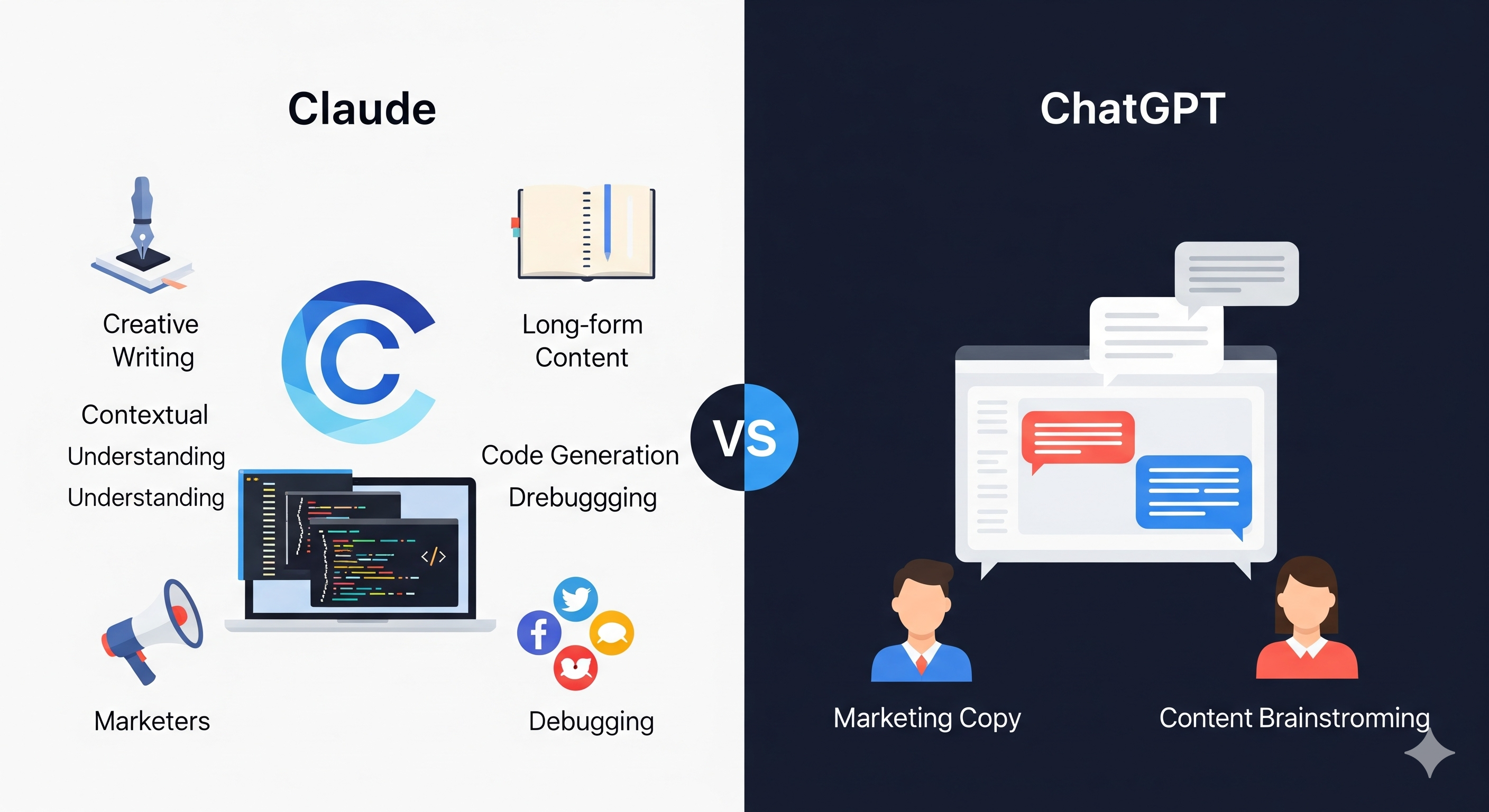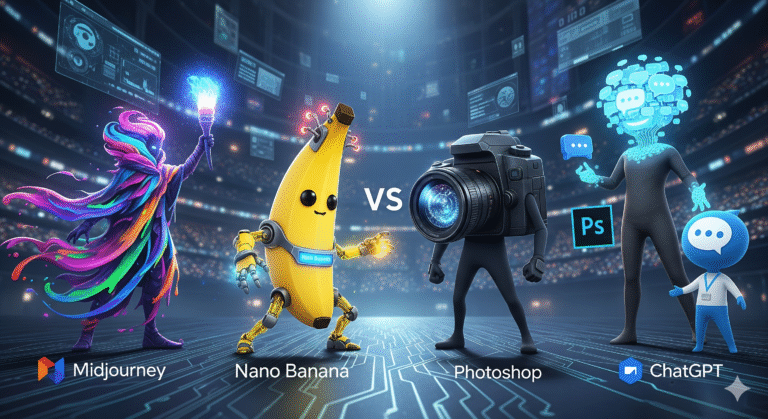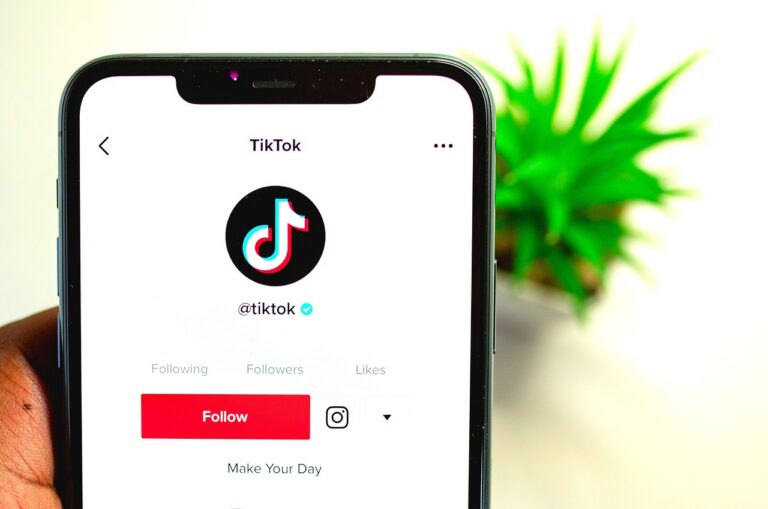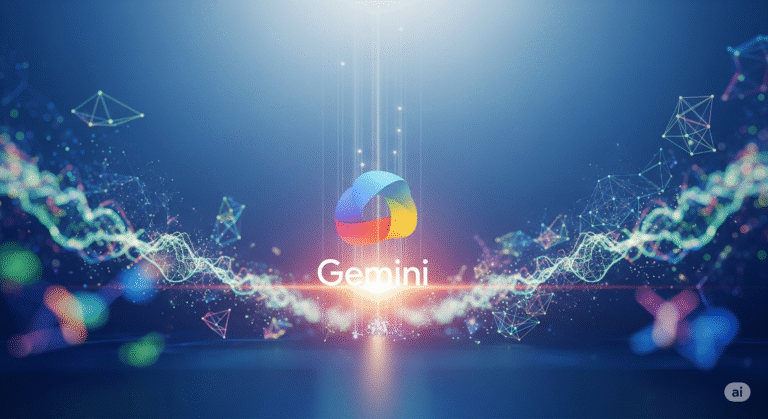Claude vs ChatGPT: The Ultimate Guide for Writers, Developers, and Marketers 2025
Table of Contents
Remember the first time you typed a complex, multi-layered question into an AI chatbot and it responded with something that felt… human? It was a moment of pure magic, a glimpse into a future we’d only read about in science fiction. But that initial wonder quickly gave way to a new question: which of these digital geniuses is the right one for me? As a writer, developer, or marketer, your time is your most valuable asset. The tools you choose can either amplify your creativity and productivity or leave you stuck in a cycle of revisions and frustration. The choice between Claude and ChatGPT isn’t just about features; it’s about finding a partner that understands your unique needs and helps you build the future you envision, one prompt at a time.
Understanding the AI Giants: Core Differences and Philosophies
The world of generative AI has rapidly evolved from a fascinating novelty to an indispensable tool for professionals everywhere. At the forefront of this transformation are two names: ChatGPT from OpenAI and Claude from Anthropic. While they might seem similar at a glance, their underlying philosophies and design principles create distinct experiences for the user. OpenAI, the organization behind ChatGPT, has long been a leader in pushing the boundaries of what large language models can do. Their approach is focused on creating a versatile, all-purpose model that can handle a vast range of tasks, from creative storytelling to complex coding. On the other hand, Anthropic, founded by former OpenAI researchers, built Claude with a different core philosophy in mind. They pioneered what they call “Constitutional AI.” This means Claude was trained on a set of principles designed to make it more helpful, harmless, and honest. In practice, this often translates to a model that is less prone to generating false information or “hallucinating,” and more cautious about producing content that could be harmful or biased. This fundamental difference in their DNA is the key to understanding why each model excels in different scenarios. When you’re weighing Claude vs ChatGPT, you are essentially choosing between two distinct approaches to AI.
The Writer’s Workspace: A Head-to-Head Content Creation Battle
For those whose livelihoods are built on words, the choice of an AI co-pilot is a critical decision. You need a tool that doesn’t just generate text but truly understands the nuance, flow, and emotional weight of language.
Creative Writing & Storytelling
When you’re crafting fiction, poetry, or scripts, the ability of an AI to capture a unique voice and maintain narrative consistency is paramount. Claude has often been praised by writers for its more natural and expressive prose. It tends to generate more “human-like” dialogue and rich, descriptive passages, making it an excellent partner for brainstorming story ideas or even writing first drafts. Its Constitutional AI framework seems to foster a more thoughtful, less mechanical style of writing.
Technical & Long-Form Content
If your work involves creating comprehensive guides, whitepapers, or detailed research articles, the sheer size of the AI’s “working memory” becomes a major factor. This is where Claude’s massive context window gives it a significant advantage. It can process and synthesize enormous documents—think entire books or lengthy reports—and then use that information to generate a cohesive response. This is particularly useful for tasks like summarizing long transcripts, extracting key data from a series of documents, or writing a detailed article on a complex topic without losing its train of thought.
SEO & Marketing Copy
In the fast-paced world of digital marketing, speed and versatility are non-negotiable. Here, ChatGPT’s broad training and rapid response times make it a powerful ally. It can quickly generate a wide variety of marketing assets, from catchy headlines and ad copy to social media posts and email sequences. While Claude is also capable, ChatGPT’s vast experience with diverse datasets makes it especially good at adapting to different brand voices and marketing formats.
Table: Content Creation Showdown
| Metric | Claude | ChatGPT |
| Natural Language Flow | Strong. Often more expressive and human-like. | Very Strong. Highly versatile and adapts well to various tones. |
| Factual Accuracy / Hallucination Rate | Very Strong. “Constitutional AI” makes it less likely to generate false info. | Strong. Generally reliable but can occasionally “hallucinate.” |
| Long-form Cohesion | Excellent. Superior context window ensures consistency over thousands of words. | Good. Can lose track in very long documents without repeated prompting. |
| Speed | Good. Fast enough for most tasks. | Excellent. Known for its rapid generation of text and code. |
| Creative Flair | Strong. Excels at rich, descriptive creative prose. | Strong. Very good for brainstorming and diverse creative tasks. |
| SEO Keyword Integration | Good. Integrates keywords naturally into the flow of content. | Very Strong. Excellent at creating content optimized for a specific keyword density and structure. |
Export to Sheets
The Developer’s Toolkit: Which AI Codes Smarter?
For software engineers and developers, an AI assistant is no longer a luxury but a necessity for streamlining workflows and tackling complex problems. The right model can act as a tireless pair programmer, debugging code and helping you learn new languages.
Code Generation & Bug Fixes
When it comes to writing code, both models are incredibly competent. You can ask them to write a script in Python, create a component in React, or generate a database query, and they will deliver. However, where they differ is in their approach to problem-solving. Claude’s step-by-step reasoning often leads to more accurate and logical code. Its deep understanding of codebases, as evidenced by its strong performance on benchmarks like SWE-bench, makes it an excellent choice for complex engineering challenges. It can faithfully adhere to instructions and pinpoint the exact spot for a fix without introducing new bugs.
Learning New Languages & Frameworks
If you’re learning a new programming language or framework, you need an assistant that not only provides the code but also explains the why behind it. Both models are fantastic for this, but ChatGPT’s vast, general knowledge base often allows it to provide more comprehensive, ready-made solutions for common problems. Claude, in contrast, offers a more deliberate, educational approach, breaking down complex concepts and showing you its “thought process.”
- For the new developer, ChatGPT’s speed and versatility with boilerplate code make it a great tool for rapid prototyping.
- For the experienced engineer, Claude’s superior reasoning and ability to handle large, multi-file changes make it a powerful ally for refactoring or debugging extensive projects.
The Marketer’s Arsenal: From Strategy to Execution
Marketing is a blend of creativity, data analysis, and technical execution. The right AI can help you with all three, from brainstorming your next campaign to analyzing its performance.
Data Analysis & Insight Generation
AI tools are invaluable for processing large datasets to uncover trends and customer insights. You can use either model to analyze customer feedback, social media comments, or even sales data. The key is in the prompting—you must feed the AI the right information. Once you do, it can quickly spot patterns, summarize findings, and help you make data-driven decisions.
Persona Creation & Customer Research
Creating detailed customer personas is a foundational marketing task. You can give an AI a set of demographic data, behavioral patterns, and pain points, and it will generate a comprehensive profile that can inform your content and ad strategies. Both Claude and ChatGPT are highly effective at this, allowing you to quickly iterate on different persona types.
Multi-modal Capabilities (Images & more)
Here, ChatGPT has a significant and unique advantage: its seamless integration with DALL-E. As a marketer, this means you can generate both text and images from a single interface. Need an ad for a new product? You can prompt ChatGPT to write the headline, body copy, and then generate a corresponding image, all in one go. This multi-modal capability is a game-changer for social media campaigns, blog posts, and digital ads. Claude, while excellent at analyzing images and providing descriptions, does not generate them. A simple prompt can generate an entire week’s social media calendar, including text, hashtags, and even image ideas. Here’s a quick example:
Prompt: “Create a 5-day social media content calendar for an eco-friendly coffee brand. Focus on Instagram. Include a post for each day with a headline, body copy, relevant hashtags, and a prompt for an image idea.”
The Practical Comparison: Pricing, Availability, and User Experience
Beyond the technical capabilities, practical factors like cost and user experience play a major role in your choice.
Pricing & Plans
Both Claude vs. ChatGPT offer a free tier that’s great for basic tasks. For professionals, the paid versions are a necessity.
- ChatGPT Plus: Around $20/month. This gives you access to the most advanced models, priority access during peak times, and the ability to use the multi-modal features like DALL-E and web browsing.
- Claude Pro: Around $17/month. This grants you more usage of its most powerful models and is particularly useful for those who need to process large documents frequently.
Interface & Usability
Both platforms feature clean, intuitive interfaces that are easy to navigate. However, some users find Claude’s interface to be particularly polished and its “Artifacts” feature—which displays generated code, text, or reports in a separate window—is a nice touch for organization. ChatGPT’s strength lies in its custom GPTs, which allow users to create and share tailored versions of the model for specific tasks, creating a vast ecosystem of specialized tools.
Context Window & Memory
The context window is an AI’s short-term memory, or the amount of information it can consider at once. Claude has a significantly larger context window (up to 200,000 tokens) than ChatGPT (up to 128,000 tokens). What does this mean for you? It means you can paste entire books, lengthy contracts, or massive codebases into Claude and it will remember all of it for a single conversation, which is a major benefit for tasks that require deep, long-form analysis.
Conclusion: Which AI is Right for You?
So, after this deep dive, which model should you choose? The truth is, there is no single winner. The best tool is the one that aligns with your specific needs.
- Choose ChatGPT if you are a creative generalist. If you need an all-in-one tool that can handle everything from writing emails to generating unique images for your social media feed, ChatGPT’s versatility and vast ecosystem make it an ideal choice.
- Choose Claude if you are a specialist who works with long-form content or code. If your work requires deep reasoning, factual accuracy, and the ability to analyze and process vast amounts of text, Claude’s superior context window and thoughtful output will be your greatest asset.
Ultimately, your journey into the world of AI is just beginning. Experiment with both models. Push their limits, and see which one feels like a natural extension of your mind. The more you use them, the more you’ll uncover their unique strengths and the incredible ways they can transform your work.
FAQs about Claude vs. ChatGPT
- Is Claude better than ChatGPT for creative writing?
- While both are excellent, many writers find the distinction between Claude vs ChatGPT for creative tasks shows Claude to be more human-like and nuanced in its output. It excels at capturing tone and voice, making it a favorite for fiction.
- Which AI is cheaper, Claude or ChatGPT?
- For paid subscriptions, the pricing is highly competitive at around $20/month for ChatGPT Plus and $17/month for Claude Pro. However, the true value depends on your usage. If you need multi-modal features like image generation, ChatGPT offers more for the money. If you need to process large documents, Claude’s larger context window provides immense value.
- Which one is better for SEO content creation?
- Both are highly capable. ChatGPT is often faster for generating a high volume of shorter content, while Claude can provide more detailed and well-researched long-form articles that often rank well. The “better” choice in the Claude vs. ChatGPT debate for SEO depends on your specific strategy and content format.
- Can these AI models replace a human writer or developer?
- No. These tools are assistants, not replacements. They can automate repetitive tasks, break through writer’s block, and speed up research, but they lack the human experience, critical judgment, and strategic insight to create truly original, impactful work. Your role is to be the conductor, guiding the AI to produce its best work while you focus on the higher-level strategy and creativity.







